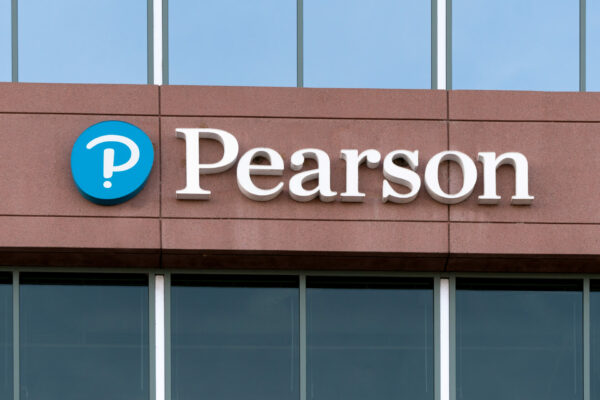
Mutual of Omaha found that employees who participate in a tuition reimbursement program are more likely to advance and remain with the company.
by Michael Echols
February 9, 2012
In the throes of the recession, when other companies were slashing their learning budgets and restricting or suspending tuition reimbursement funding, insurance agency Mutual of Omaha maintained its tuition reimbursement program.
The company provided 100 percent reimbursement up to $150 per credit hour at the employee’s school of choice, with an annual maximum of $3,600 for employees working 30 or more hours per week.
Employees could select any course relevant to their job or that would be beneficial in helping them advance professionally and become well-rounded employees.
People are a topic of great interest in the U.S. today — particularly how people are a company’s most important asset. Corporations started to figure this out for a number of reasons: baby boomers aging, a withering talent pipeline to succeed them, a growing fear of a lack of knowledge transfer, heightened global competition and a roller-coaster economy.
Mutual of Omaha recognized this early, and in 2008 put in place a quantitative study to monitor the impact of its tuition reimbursement plan on key performance indicators such as career mobility and retention. The study was intended to enable better management of employee development.
The study’s methodology was based on observational statistics. Data from study participants is matched to compare and contrast differences among them. A subsequent statistical analysis was centered on general linear models (GLM) — statistical models used in behavioral and cognitive psychology. Through the use of GLMs, researchers aligned the effects of independent — the tuition reimbursement plan — and dependent variables — Mutual of Omaha’s key performance indicators, career mobility and retention. Analysts looked for interactions among variables to make predictions about the data and identify the initiative’s effect. The study compared roughly 700 full-time employees who participated in the program between 2003 and 2008 alongside employees who did not participate in the same time period.
The intention was to determine learning’s impact on retention. Mutual of Omaha recognized that to attract, retain and motivate the best and the brightest talent, it had to quantify its learning investment.
Learning Budgets and Retention
Some companies fear that providing generous and open tuition reimbursement policies only pays to educate employees so they can leave for better opportunities elsewhere. “Deep Dive Into the Myths,” an article published in Chief Learning Officer in October 2010, refers to this as a myth. The article states that enrollment in courses through tuition reimbursement programs often signals aspiration, motivation and engagement. This real-time behavior is critical to predict future performance, including appreciation for the opportunity. Mutual of Omaha set out to put some metrics to the myth busting.
A study by Capital Analytics Inc. and Bellevue University’s Human Capital Lab observed 693 employees at Mutual of Omaha who participated in its tuition reimbursement plan and employees who did not. Completed in mid-2009, the study concluded that those who participated in the reimbursement plan were half as likely to resign as those who did not participate. The study also found higher positive job mobility rates for those who participated. Plan participants were 82.5 percent more likely to have a positive job change than non-participants.
The study also analyzed service tenure. The average service tenure for employees who participated in the tuition reimbursement plan was 21.3 years, with a range of 5.6 to 49 years. This data illustrates to employees throughout the organization that there are benefits to tapping into the plan. This fact, in correlation with positive job mobility numbers, points to a culture that encourages education and rewards the accumulation of new knowledge with advancement opportunities. The study results encouraged the company to continue its tuition reimbursement policy and promote it among employees via its biannual corporate communications campaign and in every new employee’s benefits review session.
“Utilizing the tuition reimbursement program has allowed me to enroll in a degree program that has increased my initiative and work ethic, has taught me how to make sound, ethical business decisions and to think critically,” said Amalie Otto, a claim analyst at Mutual of Omaha. “Most importantly, the tuition reimbursement program has allowed me to take control of my career and has taught me to think as a knowledge worker in the information age.”
Breadth vs. Depth
Another factor that cements the idea that learning is a pillar at Mutual of Omaha is its philosophy around what type of learning is eligible for tuition reimbursement. Under the company’s plan any class that helps an employee fulfill a requirement in his or her job role is eligible for the full tuition reimbursement of up to $150 per credit hour.
“Our leadership values education and appreciates a breadth of knowledge as much as a depth of knowledge,” said Andy Noon, manager of learning and development at Mutual of Omaha. “This flexible view of what is applicable to the job results in more well-rounded, worldly employees. Having metrics that bear out the value of our learning investment has made funding and utilizing this budget across the company a no-brainer for supervisors who can not only experience the benefit, but quantify it through this landmark study.”
Mutual of Omaha does not have a centralized budget for tuition reimbursement. Funding comes from each department. When a manager approves a tuition reimbursement expenditure, he or she is taking money out of the department budget to invest directly into one of the department’s employees. This model creates a strong team sense within a department and puts a positive spotlight on the manager and the employee using the funding. Further, leaders see that this employee and manager are committed to the future strength of the organization through the development of new skills and learning.
“In some organizations that utilize a centralized budget for learning, you can run into instances of employees learning essentially in a vacuum,” Noon said. “With our departmentalized approach, the manager is involved with what their employee is learning. The manager has a vested interest because he or she has literally invested in their employee’s future success at the company.”
The Future of Learning
The results of the 2008-2009 study were so positive — departmental support equally so — the company has increased its tuition reimbursement support to $200 per credit hour and is considering going even higher. Company leaders continue to see positive outcomes from this learning initiative, and they remain supportive. Mutual of Omaha is considering conducting a follow-up study of the impact of the tuition reimbursement policy from 2009 to 2013.
“The tuition reimbursement dollars that Mutual of Omaha invests in its employees have both short-term and long-term impacts for the team,” said Mark Batchelder, director of customer service for the company. “In the short term, employees who are motivated to advance their education have shown a greater propensity for learning new skills and applying the new knowledge to their jobs, which results in an increased ability to solve difficult claims problems. As a long-term perspective, as more and more people participate in our tuition reimbursement program, I see us creating a culture that is learning focused, which over time will result in a team that is more engaged in their work.”
In 2009, less than 10 percent of employees participated in tuition reimbursement. While this has increased since, there is still a significant opportunity for expansion. Twice a year, employee communications are sent out detailing this employee benefit and the available internal learning programs.
The company also is exploring the idea of a university partnership to develop custom or contextualized programs that speak directly to the topics and types of learning needed at Mutual of Omaha. This is weighed with semi-annual analyses conducted by the learning and development department to gauge who is participating in the tuition reimbursement plan and what types of programs they are enrolled in.
By investing in its tuition reimbursement program, Mutual of Omaha is increasing its employees’ skill levels, building employee loyalty and retention, and adding to the long-term strategic value of the organization.
Tuition reimbursement can be a powerful recruiting tool. Mutual of Omaha employees return the favor by reinvesting in the organization with increased skill levels, commitment and tenure.
Michael E. Echols is the executive vice president of strategic initiatives at Bellevue University and the author of ROI on Human Capital Investment. He can be reached at editor@CLOmedia.com.




